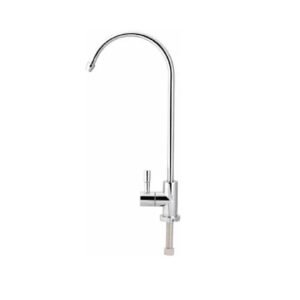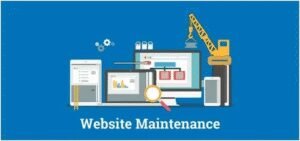Implementing Garage Management Software: A Step-by-Step Guide for Auto Repair Shops
The successful implementation of garage management software represents a critical transformation that can significantly enhance operational efficiency, customer satisfaction, and profitability for auto repair businesses. However, the transition from legacy systems or manual processes requires careful planning, strategic execution, and thoughtful change management. This comprehensive guide provides a detailed, phased approach to implementing garage management software, ensuring auto repair shops maximize their technology investment while minimizing operational disruption during this crucial transition period.
1. Pre-Implementation Planning and Assessment (Weeks 1-2)
The foundation of any successful software implementation begins with thorough planning and honest assessment of current operations. Start by forming an implementation team comprising representatives from different roles within your shop—technicians, service advisors, administrative staff, and management. This cross-functional team should conduct a comprehensive analysis of existing workflows, documenting every process from customer intake and vehicle assessment through repair execution and final billing. Identify specific pain points and inefficiencies in your current operations, whether they involve scheduling conflicts, inventory shortages, communication gaps, or reporting limitations. Simultaneously, establish clear, measurable objectives for the implementation, defining key performance indicators that will track success across areas like reduced administrative time, improved technician productivity, enhanced customer satisfaction scores, and increased average repair order values. Develop a realistic implementation timeline that accounts for data migration, staff training, and potential operational adjustments, typically spanning 6-8 weeks depending on shop size and complexity. This planning phase should also include a communication strategy that keeps all stakeholders informed throughout the process, addressing concerns proactively and building anticipation for the improvements the new system will deliver.
2. Software Selection and Vendor Partnership (Weeks 3-4)
Choosing the right workshop management software vendor and solution represents one of the most critical decisions in the implementation process, with long-term implications for operational efficiency and business growth. Beyond comparing feature lists and pricing structures, evaluate potential vendors based on their industry expertise, implementation methodology, customer support capabilities, and product development roadmap. The selection process should include detailed product demonstrations using real-world scenarios from your shop’s operations rather than generic presentations, ensuring the solution can handle specific requirements like multi-point inspections, warranty processing, or specialized service workflows. Request customer references specifically from shops similar to yours in size, specialization, and operational complexity, asking detailed questions about implementation experience, ongoing support quality, and realized benefits. Once selected, establish clear partnership expectations with your chosen vendor, including implementation timelines, training commitments, and support response standards. This selection phase typically requires 2-3 weeks of careful evaluation but establishes the foundation for a successful long-term technology partnership that supports your shop’s growth and evolution.
3. Data Preparation and System Configuration (Weeks 5-6)
The accuracy and completeness of data migration significantly impact how quickly your shop can leverage its new garage software effectively. Begin with a comprehensive audit of existing data—including customer records, vehicle histories, service templates, and inventory information—to identify inaccuracies, duplicates, or missing elements that should be addressed before migration. Cleanse and standardize data according to the new system’s requirements, paying particular attention to customer contact information, vehicle identification numbers, and parts numbering systems. Work closely with your software provider to develop a detailed migration plan that prioritizes essential data like active customer information and current inventory while establishing protocols for validating data throughout the transfer process. Simultaneously, configure the system to match your operational workflows, setting up user roles and permissions, appointment types, service categories, pricing structures, and reporting templates. This configuration phase typically requires 2-3 weeks of focused effort but creates a solid foundation for streamlined operations once the system goes live. Many successful implementations adopt a phased data migration approach, starting with core customer and vehicle data before moving to historical records and secondary information.
4. Comprehensive Staff Training and Change Management (Weeks 7-8)
Technology adoption hinges on user proficiency and acceptance, making comprehensive training and thoughtful change management essential components of successful implementation. Develop a structured training program that begins with role-based segmentation, creating customized training materials and sessions for service advisors, technicians, and administrative staff that focus on the features most relevant to their daily responsibilities. The training approach should combine initial classroom sessions for fundamental concepts with hands-on practice using realistic scenarios from your shop’s operations, gradually building confidence and competence. Schedule training sessions during slower business periods to minimize operational disruption, and consider staggered training schedules that ensure adequate coverage while maximizing participation. Establish a “train-the-trainer” model by identifying super-users within your organization who can provide ongoing support and guidance to their colleagues, creating internal resources that extend beyond the formal implementation period. Change management initiatives should clearly communicate the benefits of the new system for both the business and individual team members, addressing concerns proactively and celebrating early adoption successes to build positive momentum.
5. Phased Implementation and Go-Live Strategy (Weeks 9-10)
The transition to a new garage management system involves significant operational change, making a phased implementation approach considerably more effective than a disruptive “big bang” switch. Begin with core functions like appointment scheduling, customer management, and basic work order processing, allowing staff to build confidence with fundamental features before advancing to more complex capabilities. Consider starting with a pilot group or limited service types before expanding to the entire operation, containing any initial challenges within a controlled environment. The go-live strategy should include a period of parallel operation where both old and new systems run simultaneously, ensuring business continuity while validating the new system’s accuracy and reliability. During the initial go-live period, anticipate a temporary 15-25% dip in productivity as staff adapt to new processes and build proficiency, scheduling additional resources or slightly reduced appointment volumes to accommodate this learning curve. Establish clear support protocols during the transition, including designated contacts for different types of issues and regular check-in meetings to address challenges promptly. This phased implementation typically spans 2-3 weeks, with gradual expansion of system usage as comfort and competence increase across the organization.
6. Ongoing Optimization and Continuous Improvement (Weeks 11-12+)
The implementation process extends far beyond the initial go-live date, encompassing ongoing optimization that maximizes the system’s value over time. Establish regular review sessions during the first 90 days of operation to assess system performance against the predefined KPIs established during the planning phase, tracking progress toward implementation goals while identifying areas requiring additional training or process adjustment. As staff proficiency increases, gradually introduce advanced features like automated marketing campaigns, inventory optimization tools, detailed business analytics, and mobile inspection capabilities, continuously expanding the system’s impact on operations. Develop a continuous improvement process that includes regular feedback collection from all user groups, ensuring the system evolves to meet changing business needs while addressing any persistent challenges. Monitor system utilization patterns to identify features that are underutilized or misunderstood, providing targeted training to maximize value realization. This optimization phase represents an ongoing commitment to maximizing your software investment, with shops typically spending 3-6 months reaching advanced proficiency levels and continually discovering new ways to leverage the system for competitive advantage.
Conclusion
Successfully implementing garage management software requires careful planning, strategic execution, and ongoing commitment, but the operational improvements and competitive advantages justify the investment many times over. By following this structured approach—from thorough pre-implementation assessment through continuous optimization—auto repair shops can navigate the transition smoothly while maximizing staff adoption and accelerating return on investment. The most successful implementations approach the new system not as a simple technology replacement but as an opportunity to transform operations, enhance customer service, and build a foundation for sustainable growth. With the right approach and commitment to the process, shops can leverage their management software to achieve new levels of efficiency, profitability, and competitive differentiation in an increasingly challenging automotive service market.
Learn More About Garage Management Solutions:







